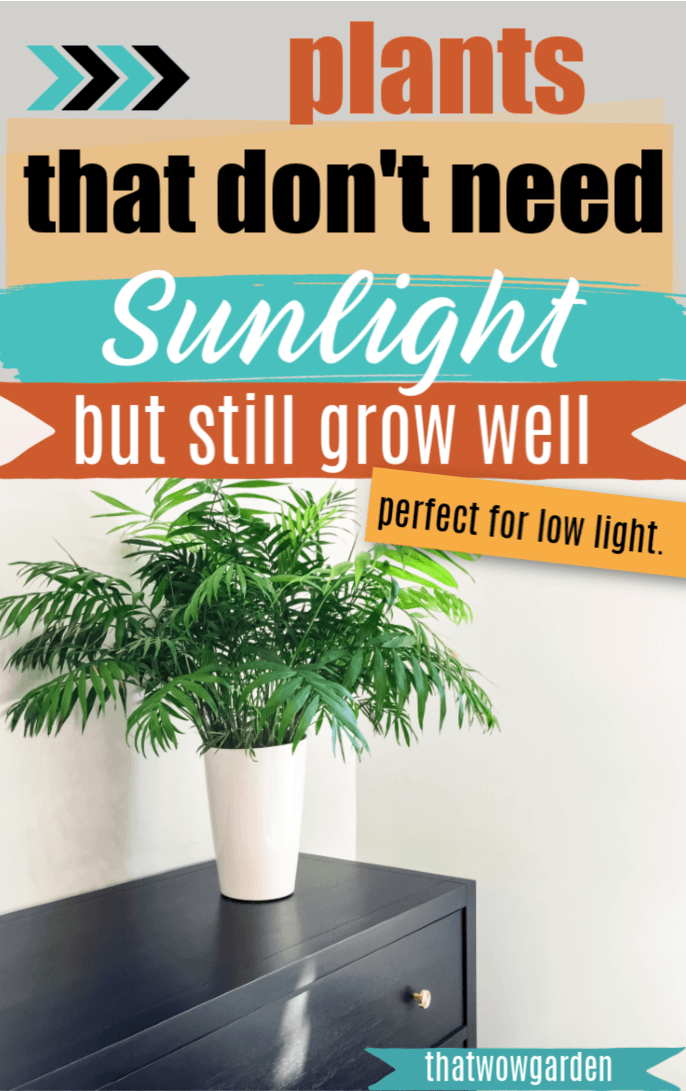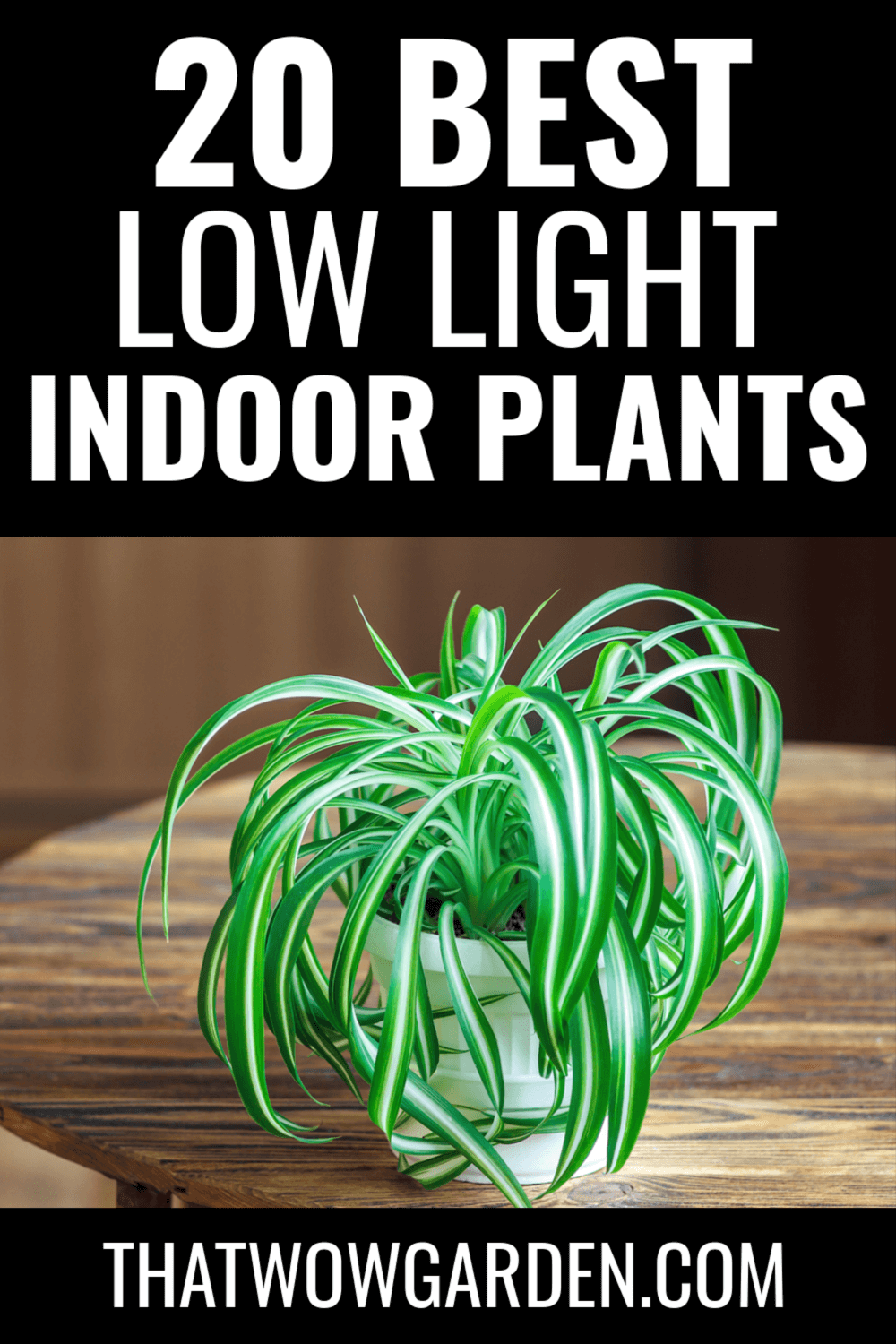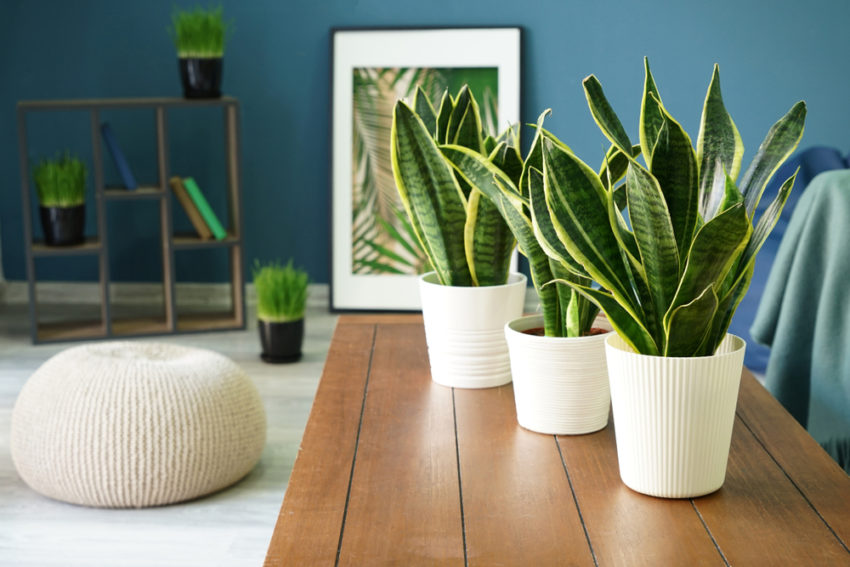Are you a gardening enthusiast? Want to furnish your sun-deprived rooms with houseplants that need almost zero sunlight? We have the right guide for you!
Some of the best indoor plants don’t need the sun and they can survive on artificial light as well. So, if you want to add touches of soothing green to your interiors, don’t worry about the sun.
From natives of South America to West Indies, these species are mostly very easy to grow, forgiving and they can survive days of neglect as well. The low-light houseplants include trusty staples from homes and offices that are popular for many good reasons. There are some unique and never-seen-before picks as well that neither demand green thumb nor tons of sunlight. We have also listed a succulent, few climbers, and something from the Devil as well!
Check out 20 Indoor Houseplants That Need (Almost) Zero Sunlight that lists the coolest low-light houseplants for you!
1. Aralia Ming
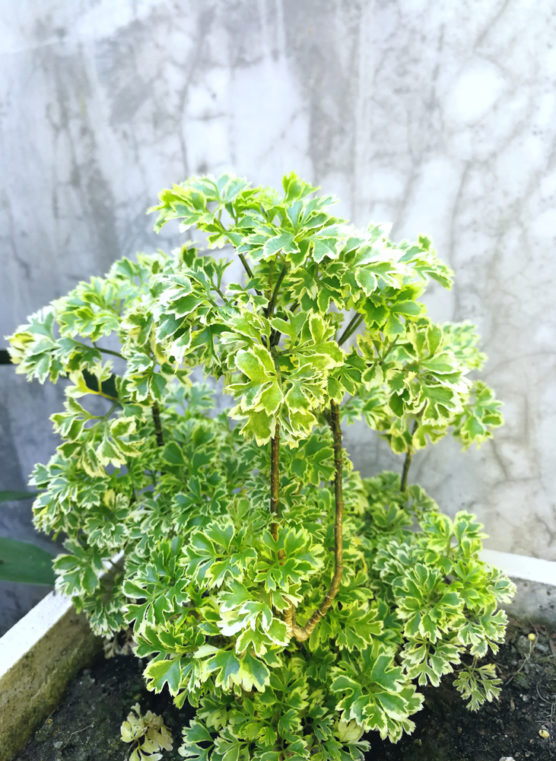
Ming Aralia with the scientific name of Polyscias Fruticosa is an indoor plant that can survive on low light. Being singular, it is also an exotic species hence growing it is always worth it. It has a complex structure with graceful narrow branches and it is ferny in appearance with foliage droops.
An Aralia Ming can grow up to 6 feet with proper care and it can be a replacement of the might bonsai as well. It requires high humidity to serve hence one should water this every week. It is also advised to keep it in warm areas since it is a tropical species. You can use liquid fertilizers to boost rooting hormones and don’t forget to trim the branches and make it look gorgeous!
2. Red Aglaonema
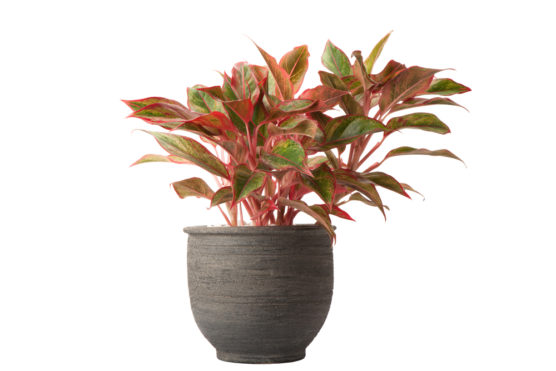
If you are a novice indoor gardener, this Chinese evergreen species is something great to start with. One can opt for a red Aglaonema plant that one of the most durable houseplants, surviving on well-draining soil.
They can live on medium to low light, but you want the color to maintain the contrast, you would need bright light. It enjoys moderate watering, humid conditions, and slightly warmer temperatures. It doesn’t demand much from its owner, just a water-soluble fertilizer twice a year and loads of love!
3. Devil’s Ivy
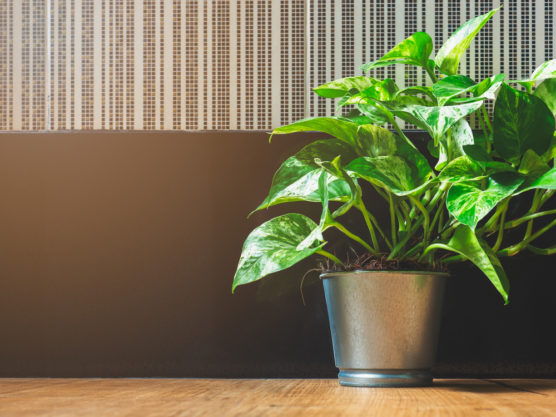
Since it can survive the harsh conditions and still manage to grow, Golden pathos is also called Devil’s Ivy. It is tropical and has evergreen roots which make it an extremely popular house plant. With waxy, heart-shaped foliage, golden pathos can grow from 6 to 8 feet.
If you want the Devil’s Ivy to bloom well, use peaty potting mix and use a container with proper drainage. Keep it away from direct sunlight and situate it in an area that either receives in-direct sunlight or bright artificial light. An Epipremnum aureum is drought resistant and you need to water it once a week which must be reduced to once every other week during winters.
4. Nerve Plant

This small-lief, bicolored species is a native of Peru which is also called fittonia. The most amazing thing about the nerve plants is the colored leaves. From layered green to light pink, one can drool over the leaves!
With proper care, it can grow between 6 to 12 feet and can fit in well in a windowsill planter. It can survive well in low lights, but the colored leaves would eventually fade and the green would dominate. You can also opt for regrowth and make it leafy, the indoor plants do deserve to look lush and graceful!
5. Ponytail Palm
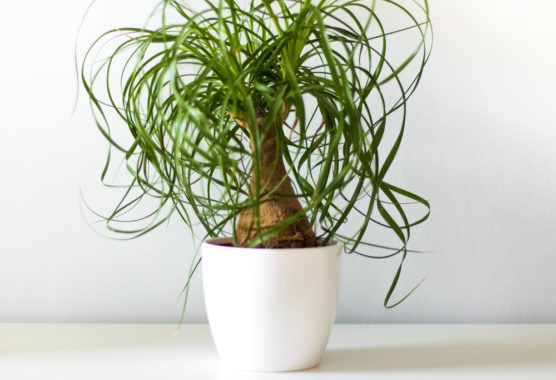
Also known as Beaucarnea recurvata, belongs to the Agave family and is classified as a succulent. It has a thick and bulbous trunk and hair-like leaves, with little resemblance with palm leaves and hence it is also called bottle palm tree.
It can grow well in semi-dry conditions and can survive in low light for almost half a year. It would be better if you give it bright light during the summer and keep it in low light for the winter. With relatively short care instructions, ponytail palm can be grown in small pots as they do not require a large amount of water at one go. Also, do take care of its pretty ponytails, if you know what I mean!
6. Weeping Fig Tree
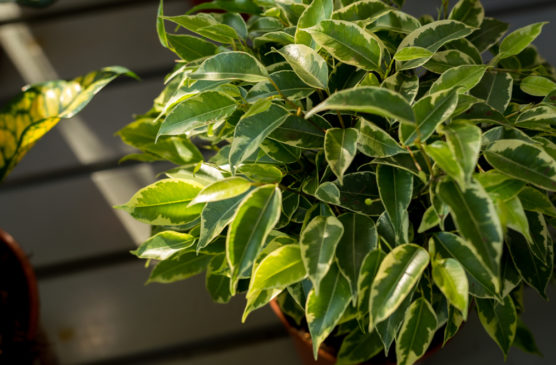
Yes, it has a sad name but it is a happy tree! It is one of a kind species that can transform your interiors from flat to fab. It is quick-growing and requires occasional trimming to keep it in shape.
A Weeping Fig tree can survive well on low light like it would be okay to keep it near a window because shadows can result in shunted growth. It does require regular watering, at least twice a week and a big pot would be nice, I mean you won’t be using it as wall art, would you?
7. Bromeliads
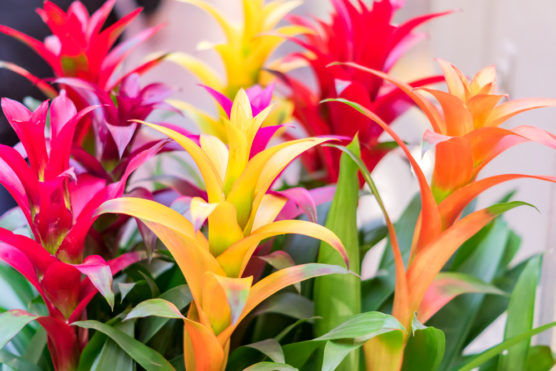
Talking about wall art, bring in some interesting texture to your indoor garden by installing the gorgeous bromeliad in a wall shelf. I mean why not? This plant is low maintenance, has an exotic vibe, and requires medium light. You can place it in direct sunlight for twice or thrice a week and it will happily live and laugh!
The sword-shaped wide leaves grow around a unique central cup and have vibrant colors as well. You can use orchid mix soil in a shallow pot and feed a fertilizer once a month for better growth. This little friend is my favorite species, what about you?
8. Spider Plant
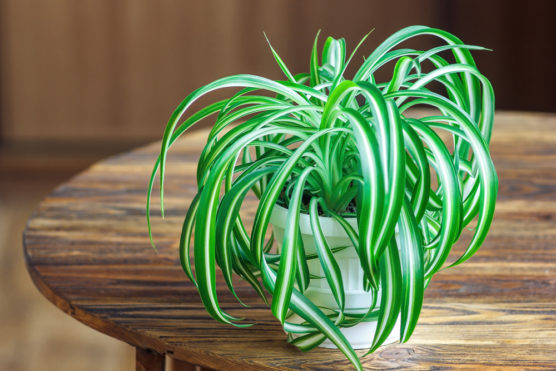
The South African species with a scientific name of Chlorophytum comosum vittatum is a well-known houseplant that can survive on low temperatures. However, with prolonged negligence, it might start to look unattractive which is not a good deal.
Place it in a nicely lit room where there is no direct sunlight. Spider plants require a decent pot mixing and plenty of water during summer. They are also responsible for filtering the air significantly, and hence if you aren’t a novice gardener, this would be a good choice!
9. Snake Plant
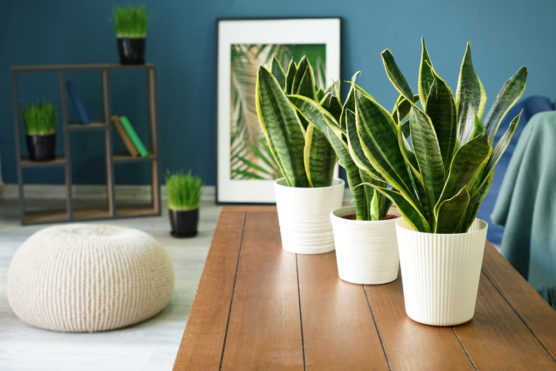
If you want something with an architectural shape with loads of greenery, the snake plant is for you. It is one of the most tolerant indoor plants, and it can survive anything! The strappy leaves can tolerate negligence and they would still look fresh and attractive.
A snake plant can grow from leaf cuttings and free-draining soil would be good enough. This tropical native can grow up to 8 feet and it has to be kept in indirect sunlight, and no extra watering during winters. It would be good to let it dry a little before routine watering!
10. Peace Lily
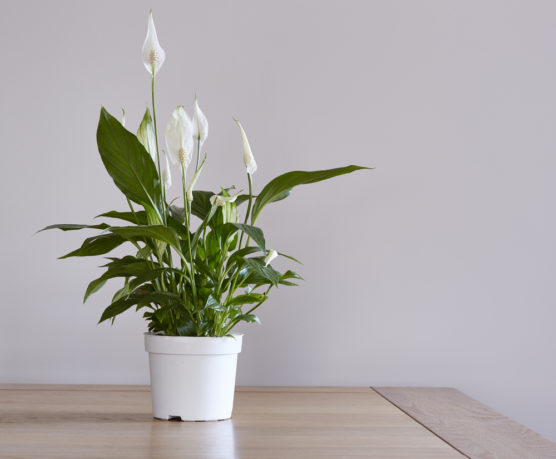
Whether it is home or office, peace lilies are excellent indoor plants as they can enjoy medium to low light. It grows dark green leaves with pretty white flowers. Moreover, it has a beaded leaf bract which makes a wonderful display.
Peace lilies can survive on low water and overwatering is fatal for it. Fertilizing them twice a year is enough for healthy growth. The wide, waxy leaves are dust magnets so you must wash them with a damp cloth regularly and avoid using commercial leaf shine products. The cherry on top would be those impeccable white flowers that are extremely soothing to the eyes!
11. Oyster Plant
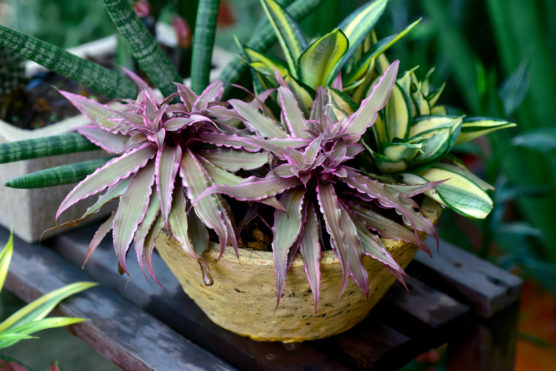
Another colorful example of a low-light houseplant, Oyster plant, or Rhoeo discolor is a fast-growing and excellent indoor plant. Not meant for tropical countries, it can live in temperatures ranging between 1 to 10 Centigrade and enjoys shade or low light.
It is drought tolerant and even moderate watering can result in root rot. Low humidity, good drainage, and low light are everything that a Rhoeo needs. Show some extra love to your dear oyster plant by fertilizing it twice a year and trimming the dried leaves. I almost forgot it is also a vegetable that is edible and tasty!
12. ZZ Plant
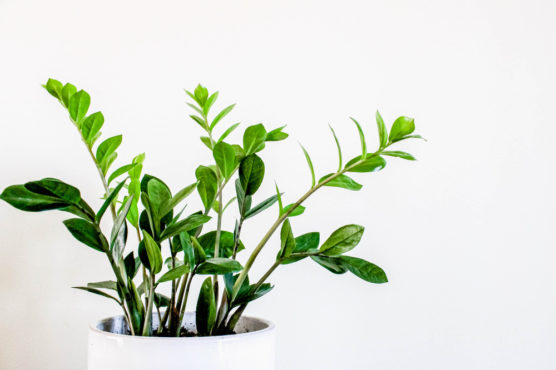
Full of lushness and color, the ZZ plant is all about thick, waxy leaves, and a splendid appearance. We can call it indestructible since it can tolerate months of neglect and low light and still manage to look amazing.
Also known as Zamiocalcus zamiifolia, it has a bulbous base and wide, oval-shaped leaves which are often mistaken for fake plants. It is an ideal plant for a window-less area as it can survive in fluorescent light. Just like cacti, it requires less water and fertilizing it once or twice a year would be just enough!
13. Philodendron
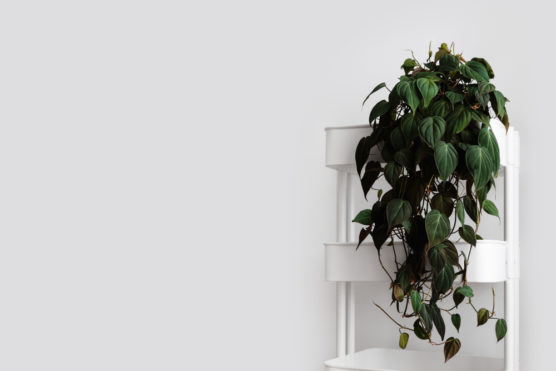
Our very own heart-leaf houseplant known as philodendron is a convenient houseplant with minimal caring needs. It is intelligent enough to give you the required signal when it requires something. There are two types of species that are vining philodendrons and non-climbing philodendrons such as lacy tree and bird nest philodendrons.
It can survive well on bright, indirect sunlight and also enjoy a shady spot. Allow the topsoil to dry out before you water the plant to avoid drooping. With little care, the heart-shaped leaves can give to extreme happiness with its charm!
14. Marimo Moss Ball
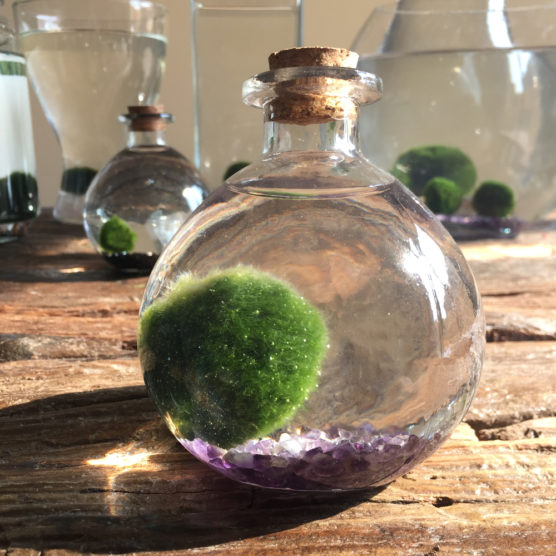
Marimo or a seaweed ball has slightly different characteristics from a regular houseplant. Dress it up with a beautiful aquarium or fishbowl and watch them grow. Protect the Marimo from direct rays of the sun as it may turn brown with exposure.
Some extra care is required as it is surrounded by water and it has to be changed once every two weeks. Also, don’t forget to clean the Marimo enclosure to avoid algae bloom. These plants can also survive without water but it has to be stored in sealed plastic bags to avoid drying out!
15. Peacock Plant
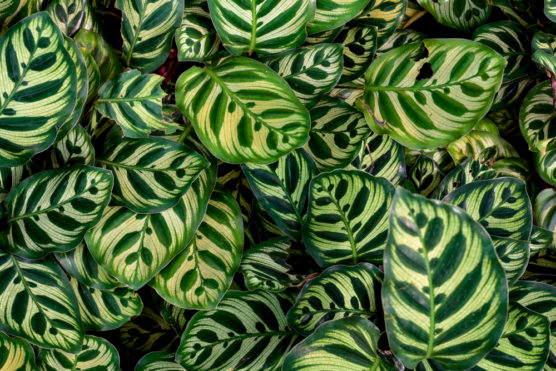
You might call this the queen of indoor houseplants for its glamourous appearance and tolerance power. Also known as Calathea makoyana, it offers a range of attractive foliage and can survive happily in a high humidity region. Want to love your peacock houseplant? Bless it with lukewarm showers frequently and it will be fresh and lush!
It can thrive on a medium to a low light environment and one must use fluoride-free water to prevent any damage to the roots. Those patterned leaves would be a lovely addition to any interiors and I can never say no to this one!
16. Dumb Cane
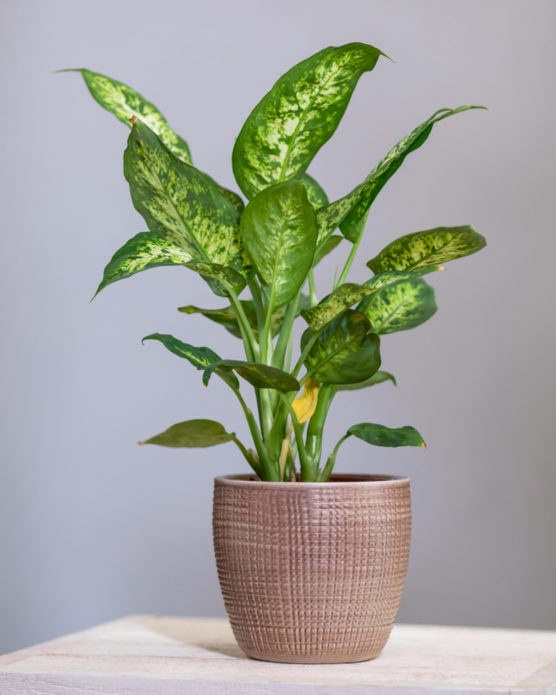
With an easy-going nature, Dumb Cane or Dieffenbachia amoena is a very famous houseplant because of its patterned leaves. Interestingly, all the patterns are unique on the leaves and the West Indian native is also capable of growing flowers.
It has an amazing color transition with yellow near the veins which changes to dark green abruptly around the ribbons and beautiful spots. For optimal growth, keep it in bright, indirect sunlight and keep the topmost soil moist always. If there is prolonged neglect, the shrivel or burn if they receive direct sunlight. For faster and healthier growth, fertilize it once a month and see it smile!
17. Dracaena
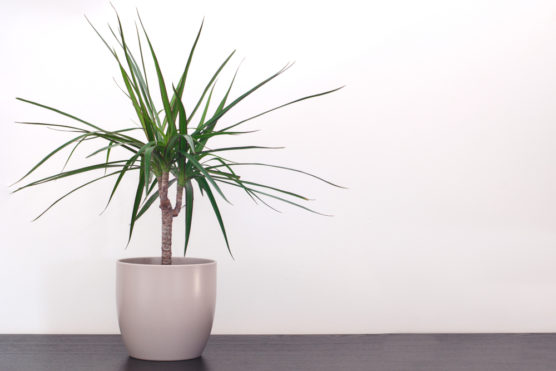
Want a houseplant for a beautiful floor decor? Dracaena is waiting for you! This genius plant has about 40 species, all different from each other, and can grow up to 3 feet indoors. It has dramatic foliage with colored patterns that can be the center of attention in any room.
Dracaena reflexa is the most common dracaena species that is adaptable to low light and direct sunlight can scorch the foliage. It doesn’t require routine watering, just moistening the leaves with water would be enough. If the leaves turn yellow or start to droop, the major reasons might be overwatering or poor drainage. Dracaena requires high humidity to survive and it is advised to place it away from heating and cooling appliances.
A quick tip: The leaves are poisonous to cats and dogs if eaten. The symptoms might be serious, so it must be out of reach if you have pets!
18. Maidenhair Fern
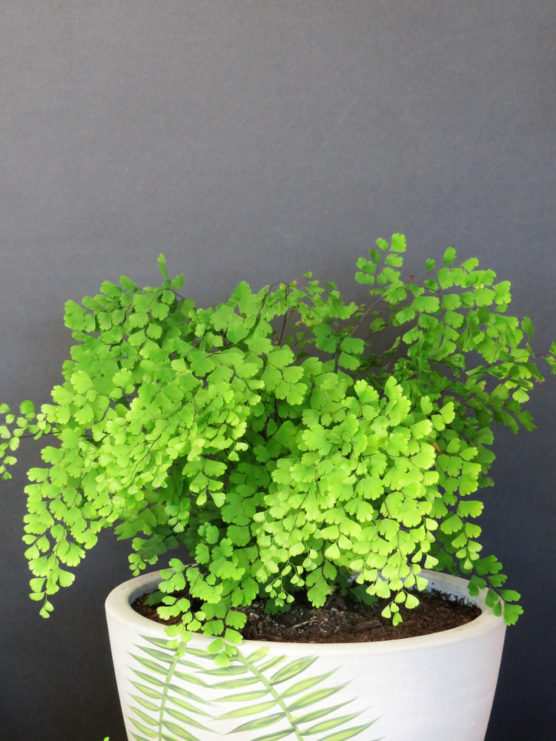
Here comes the feathery foliage Maidenhair fern! Add some greenery to your bright interiors with this beautiful houseplant and immerse yourself in the landscape charm. The North American native has a five-fingered fern with attractive black stems.
Growing a Maidenhair fern is easy as they can thrive in full shade and well-draining, organic soil. You must mist the plant daily as they cannot tolerate dry air or low humidity. Be very careful with the watering since overwatering is fatal and is so dry. Set up a watering routine after thorough observation. Also, they are a survivor so don’t throw it away instantly if it dries up. Soak it well and they will eventually produce fresh and green leaves!
19. Parlor Palm

Popular in the United States, parlor palm is an attractive, little houseplant that is adaptable to extremes. It can survive in low light, low temperatures, and needs alkaline soil to grow. As the native of Southern Mexico, it can stay alive in temperatures below zero but they will die in frost.
Parlor palms are sensitive to overwatering and you should water it when the topmost soil layer is dry. It will warn you with yellow fronds if it needs more water. Avoid repotting since they have weak root systems and keep it away from direct light. It is also non-toxic for both humans and animals, so it is indeed a good choice!
20. Peperomia
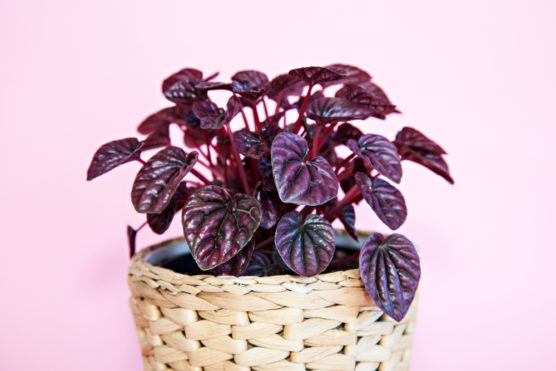
If you want to try your luck with a flowering houseplant, go for peperomia as you might fall for its ornamental nature. From red to green, variegated to smooth, the leaves have striking looks with decorative foliage. It is also known as a baby rubber plant or shining bush plant.
Keep it in medium to bright light and at least 12 hours of artificial light to maintain the vibrant foliage. Either orchid or regular potting soil would be good for a peperomia and they like it warm and steamy. Due to its tropical nature, the plant requires high humidity but no frequent watering. Show some extra care to pretty peperomia and it would never ask for the support of fertilizers. Coming to the types, there is a Belly Button Peperomia as well. Isn’t it amusing?
After spoiling you with choices, I wish you select wisely, considering every factor that has to be taken care of. Gardening is not a tough job if you have the right minds for it. So why wait? Start today. Happy planting!

